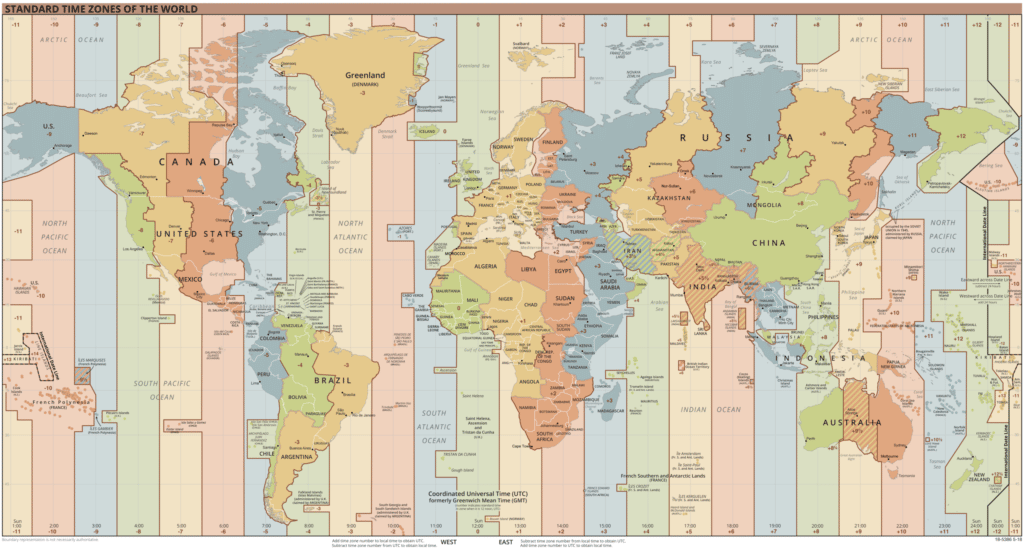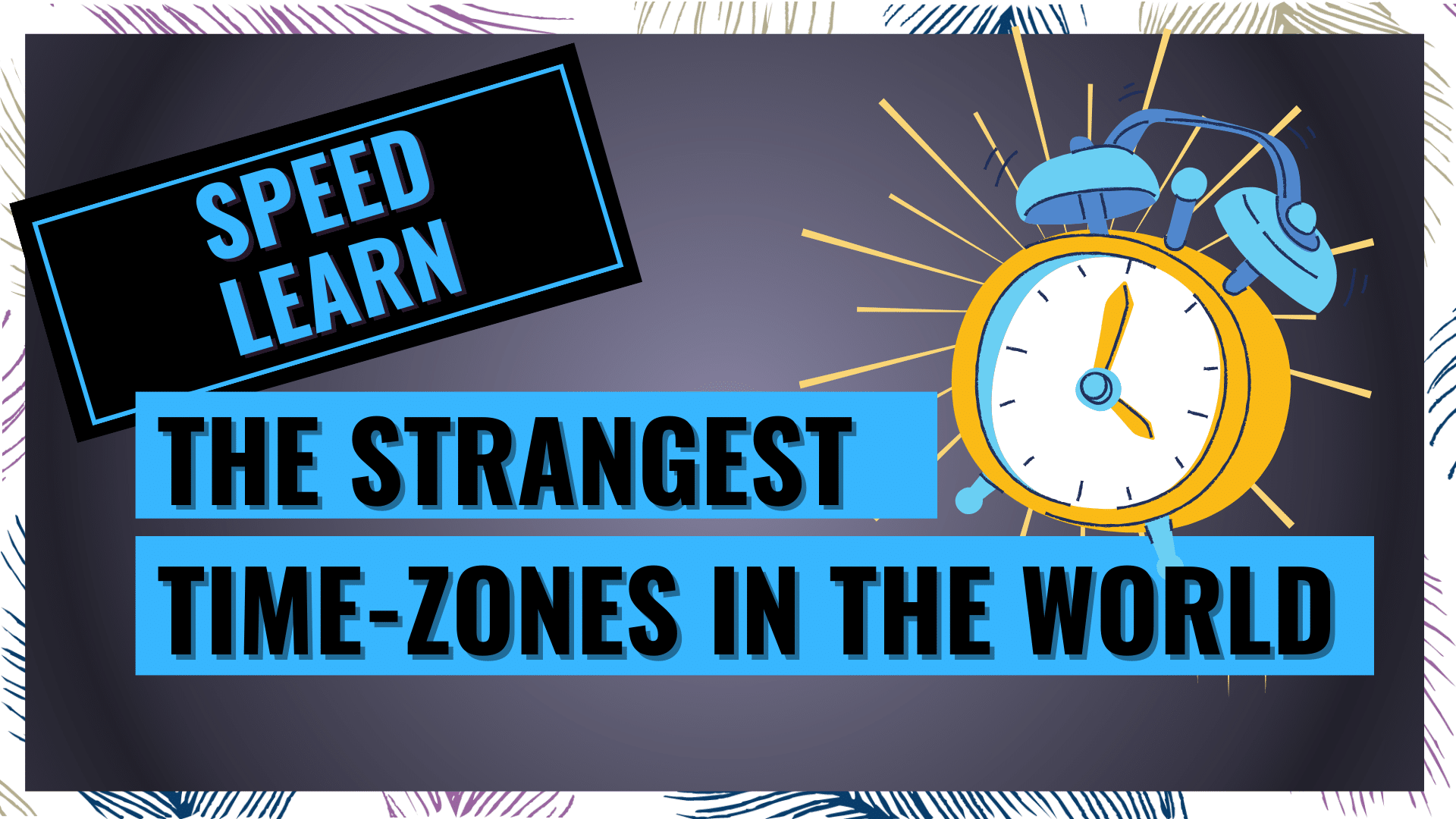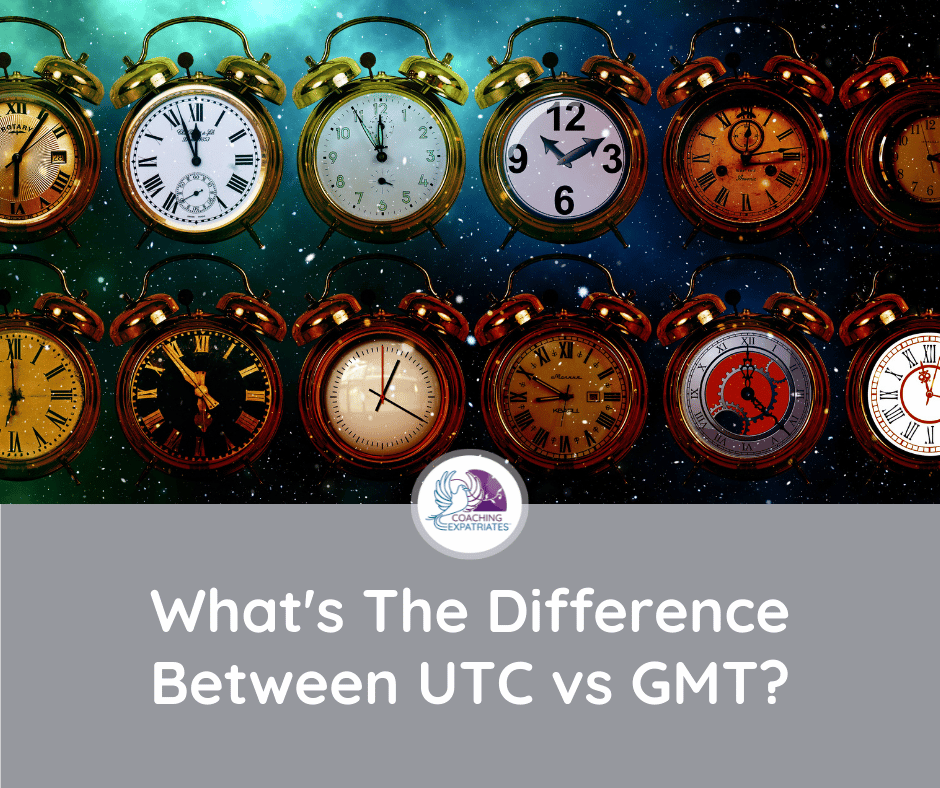In the past couple of decades, the internet destroyed all boundaries left to worldwide communication. Not only messages became instant, but the possibility of communicating instantly with any part of the planet through video-conferencing became a reality. Understanding the different time-standards, like UTC vs GMT became critical to accomplish tasks while being conscious of time at people’s locations.
A frequent question I hear from global leaders worldwide is “What’s the difference between UTC vs GMT and what should I use? The main difference between UTC and GMT is that GMT is an actual time zone used by a few countries in Africa and Western Europe, whereas UTC is a time standard used to synchronize time across the world.
As a global executive, if you are asking this question, you are asking the right questions! Let me help you go a step further by helping you understand how to use it to be more inclusive and have higher cultural competence.
Definitions Of UTC vs GMT
GMT stands for Greenwich Mean Time. It is the mean solar time observed at the Royal Observatory in Greenwich, London.
UTC means Coordinated Universal Time, and it is the primary central time standard by which the world synchronizes clock and time, nowadays, which also is based on time in Greenwich, London. UTC uses in its calculation both the International Atomic Time (TAI) and the Universal Time (UT1), known as the astrological time that also accounts for Earth’s rotation.
Although many English speakers misuse it as a synonym, UTC is the successor to the GMT.
The International Telecommunication Union and the International Astronomical Union wanted to use one abbreviation in all languages when establishing the standard. After much debate and consideration, they finally compromised and decided to use the acronym UTC globally to signify Coordinated Universal Time.
How Does UTC Offset Work?
Time zones around the world are expressed using something called “offset.” Both Positive and Negative offsets from a central time will help individuals know how many hours must be either added or subtracted from that time.
GMT divides the world into time zones. In comparison, UTC divides the world by time standards. It sounds complicated, but basically, what this means is that you could have a place within a certain time zone, but their UTC might be different from that. UTC does not account for daylight saving, while GMT does.
Regardless of whether you are tracking your team’s time using GMT or UTC, how both works are pretty much the same.
For example, UTC-3 means 3 hours must be subtracted from the Universal Time to give the local time. If in the location of the Universal Time it is noon, then it means local time at UTC-3 is 9 AM. On the other hand, if you have UTC+3, this means local time at UTC+3 would be 3 PM.
If you are in NY, for example, UTC-5, and want to know what time it is in Abu Dhabi, which is UTC+4, you will have 9 hours of difference. This means that 5 PM in NY is 2 AM the next day in Abu Dhabi.
UTC Offset Calculation Example
If you have someone in UCT-3 Sao Paulo, Brazil, and another person in NY, UTC-5, then the difference is only 2 hours.
How do you know if this difference is positive or negative will depend on where you are and which side of the globe the other country is in. The calculation looks like this:
Time Difference = [UTC in local time] – [UTC in other city]
If the city you are inquiring about is located to the left on the map from where you are, then you’ll have to subtract that difference to find their time. If they are to the right, you will have to add.
In the last example, you have 2 hours difference. If you are in NY, Sao Paulo is to your right. So if it’s 11 AM your time in NY, it means you have to add 2 hours to find out what time it is in Sao Paulo. In Sao Paulo, it will be 1 PM.
On the other hand, if you are in Sao Paulo, NY is to your left, which means you will have to subtract 2 hours to find out what time it is there. So if it’s 11 AM in Sao Paulo, it will be 9 AM in NY.

Time Standards Creation: UTC vs GMT
With globalization, a time standard has become necessary to coordinate transportation, military operations, and communication, in general, including internet protocols and computer clocks.
So, yeah, this evolved over time.
It all “started” as the United Kingdom developed into an advanced maritime nation; a system to help mariners keep track of time became necessary. A convention was adopted in 1884, to use the Greenwich Meridian as the longitude zero-degree.
Most time zones were later based on the GMT, and they would be expressed as an offset, in the number of hours, to that meridian. So you would often hear “ahead of GMT” or “behind GMT.” GMT was quickly adopted by transportation organizations, like the Railway Clearing House, in 1847.
Formal coordination of time around the world began in 1960, and the newest UTC standard was implemented and adopted in 1972. Although many places still use the GMT time zone, the latest official standard is now the UTC.
The main reason UTC is considered more accurate is that it uses the rotation of Earth and atomic clocks for measurements. Another important point is that UTC does not observe Daylight Saving Time to maintain a consistent time system, unlike GMT.
Strange Time Zones
It took many decades before all time zones around the world were based on a standardized offset from GMT and, later, the Coordinated Universal Time (UTC). By 1929, the majority of countries had adopted hourly time zones, though some countries such as Iran, India and parts of Australia had time zones with a 30-minute offset. Nepal was the last country to adopt a standard offset, shifting slightly to UTC+05:45 in 1986.
The following video is not from our channel (so we don’t want to wrongly take credit from it, of course), but we want to share it, because it brilliantly portraits how different Offsets around the world can be confusing.

How To Find Out Local Times Without Going Nuts?
Today, there are fantastic ways to find out the local time in a place without going nuts with the calculations.
The first one is google. If you search “UTC in [CITY], you will find out the location name, local time, and UTC offset of that place. This information is captured from the website Time And Date, which you can also explore as a separate resource.
For example, UTC in Sao Paulo using the Google search as per above:

Worldtimeserver.com
Very similar to Google, you can search for the city on this site, and it will give you all options with that city’s name to choose from, including time zone. You can verify the local time, the name of the time zone associated with it, and the UTC offset. It also indicates if the location is under daylight saving time or not.
24timezones.com
This website has a cool world map where you can see the different times around the world right on the spot. All you have to do is hover your mouse over a city on the map. You can also see if it’s night or day: the shaded part on the map shows it is night while the clear part shows it is day.
Phone Apps
There are hundreds of phone apps that you can install and use to help you track time in different locations. Find one that can give you a widget to install on your phone and see on the spot different times in other locations. For example, I use “World Clock.” It has a widget that helps me catch up to 6 locations on my screen and their different local times. I included the locations where I have frequent contact.
Time Awareness And Cultural Competence
Every global leader must be conscious of people’s time and location. You will show a sign of great respect by knowing their local time in advance and setting up meetings at reasonable times for all participants.
As a global executive, make sure always to ask people’s UTC offset so that you can coordinate the best time for meetings and virtual reunions.
Please note that you have to consider the time a meeting is starting and the time the meeting will likely end. If you have a meeting or event that usually runs for 3 hours, look at everyone’s UTC offset, and make sure it’s within the working hours for everyone.
For example, let’s say you consider starting a meeting at 3 PM London time. All participants are in London. Since this meeting usually takes 3 hours, it will likely end by 6 PM for everyone. Now, imagine half of your team members are in Abu Dhabi, which is UTC+4. Starting a meeting at 3 PM means they will be starting the meeting at 7 PM, and the meeting will be over at 10 PM for them. That’s not being time conscious or reasonable.
Make sure always to schedule your meetings in time frames that work for all locations, as much as possible. This not only will express your respect for different places and cultures but will also demonstrate that you have high cultural competence and an inclusion mindset.
Final Remarks
There you go, global leader! Now you are prepared to set global meetings in a conscious and respectful manner! Choose one of the phone apps or internet tools we mentioned to help you make good time arrangements.
If you are interested in developing your cultural competence and want to learn all the important skills that every high global executive has, check out our online Global Executive Leadership Program. We go over all 4 success pillars of Global Leadership during 9 online modules, including 1 dedicated module in Cultural Leadership.
In case you have a specific Skill in mind that you want to develop or a situation in which you feel stuck, you can purchase one of our executive coaching packages. We can help you sort the issue or topic out during your program and find the best course of action to make things better for you and your team. Executive coaching can be an extremely powerful tool for building skills and ideas to create collaborative teams, and many high executives make constant use of it.
If you enjoyed this post, consider subscribing to our newsletter using the form below. We focus on providing good content to global leaders and executives who want to make impactful business decisions and be more inclusive and influential. We know your inbox is sacred, so we email just once per week, and we never sell your information. Trust is the basis of Global Leadership, and we fully honor it.







